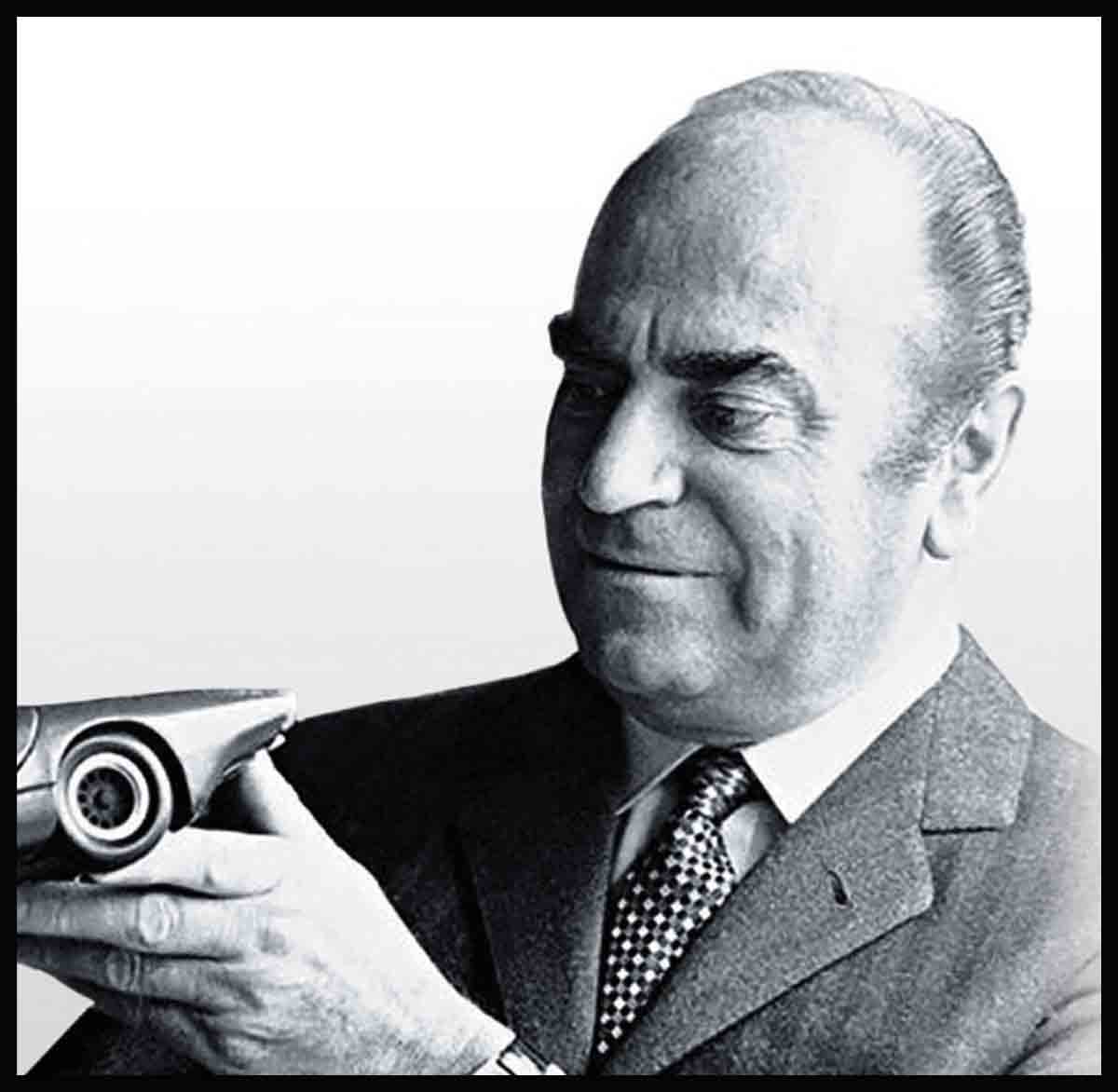
Great Designers Bertone
Arguably the greatest name in the history of car styling, Nuccio Bertone’s company was one of the world’s longest-lived design brands. Under Nuccio’s guidance the company created pioneering and commercially successful designs for the likes of Alfa Romeo and Lamborghini, applied ideas of genius to concept cars, built a bustling car factory, and discovered and nurtured exceptional talent.
“A car is the product of a feeling, or rather, a series of feelings.”
NUCCIO BERTONE
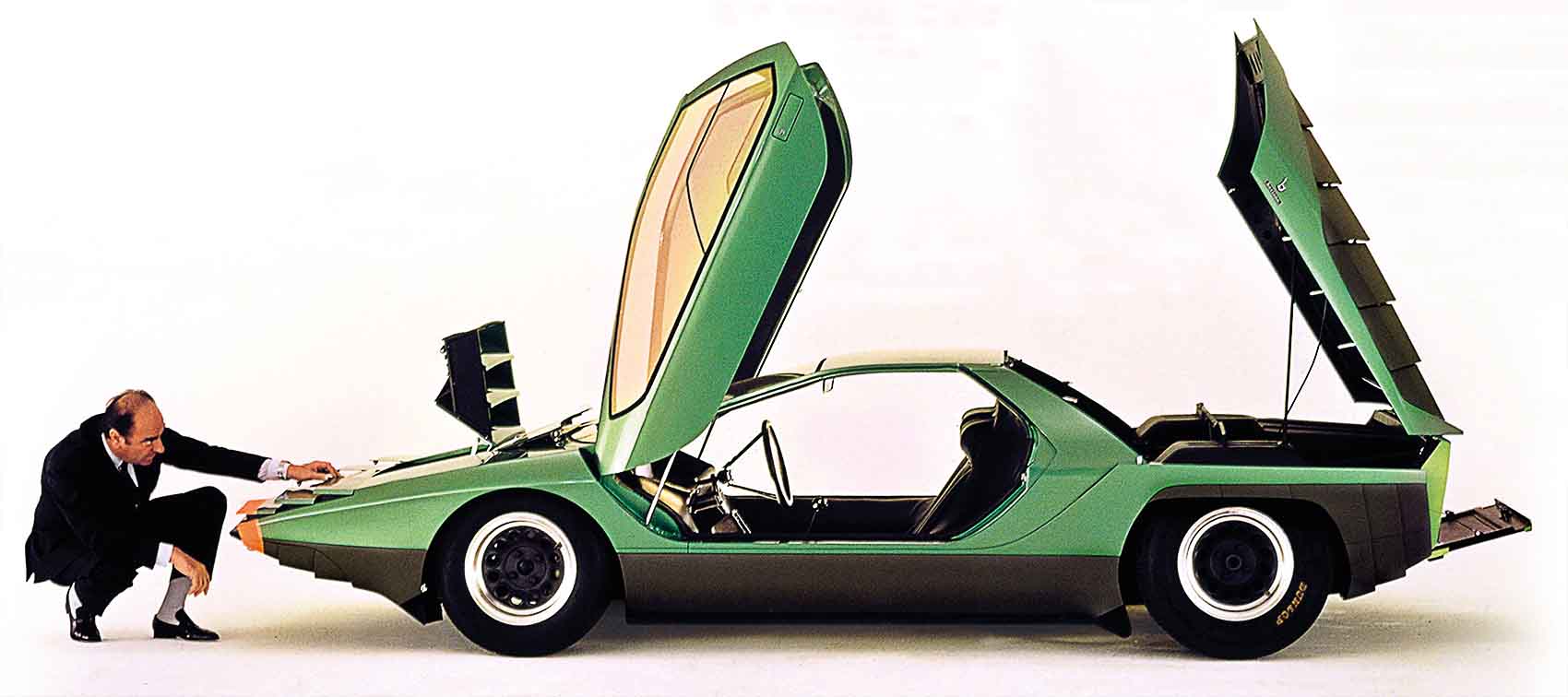
Nuccio Bertone inspects his 1968 concept car for Alfa Romeo, the Carabo. Its dramatic wedge shape would continue to influence car designs until well into the 1970s.
EX-WHEELWRIGHT GIOVANNI BERTONE was a pioneer of the Italian design movement, founding his carrozzeria (auto shop) in Turin as early as 1912. However, the company’s heyday only really began in the 1950s, after Giovanni’s son, Giuseppe “Nuccio” Bertone, took over the reins. A talented and instinctive man, Nuccio instantly saw that the future of coach-building lay not in rebodying chassis but in adapting bodywork to fit the new “monocoque” platforms manufacturers were adopting. He was also one of the first design managers to realize the impact made by pure “dream car” shapes.
Bursting triumphantly into the post-war era, Nuccio’s most striking creation was built for Alfa Romeo in 1953: the Berlina Aerodinamica Tecnica, or BAT. Designed to be as aerodynamically efficient as possible, its bold, swooping shape was reputed to have a drag coefficient of just 0.19—one of the lowest figures of all time. Nuccio later magnified the bat-like form in two further, even more striking BAT designs in 1954 and 1955.
THE CAR-MAKERS’ DARLING
It was another Alfa Romeo—the Giulietta Sprint, launched at the 1954 Turin Motor Show—that really cemented the Bertone name for design brilliance. This elegantly simple coupe won Bertone such a reputation that it became the first port of call for a raft of car manufacturers.
In the early 1960s Bertone created such iconic shapes as the BMW 3200 CS, Iso Grifo, and Fiat Dino, but one car stands out above all: the Lamborghini Miura. The effect the Miura had on car design when launched in 1966 cannot be underestimated: its elegant proportions, striking details, and pioneering mid-engined layout all won instant acclaim. Nuccio had a knack for hiring brilliant young talent: such great names as Giorgetto Giugiaro, Marcello Gandini, Giovanni Michelotti, and Franco Scaglione all served their apprenticeships at Bertone.
The company was also bold in its pursuit of manufacturing contracts, building cars for Alfa Romeo, Fiat, Volvo, and Opel among others. By 1968 it was assembling 30,000 cars a year. Bertone also became a commercial brand in its own right, badging models under its name, including the X1/9, Ritmo Cabriolet and Freeclimber off-roader.
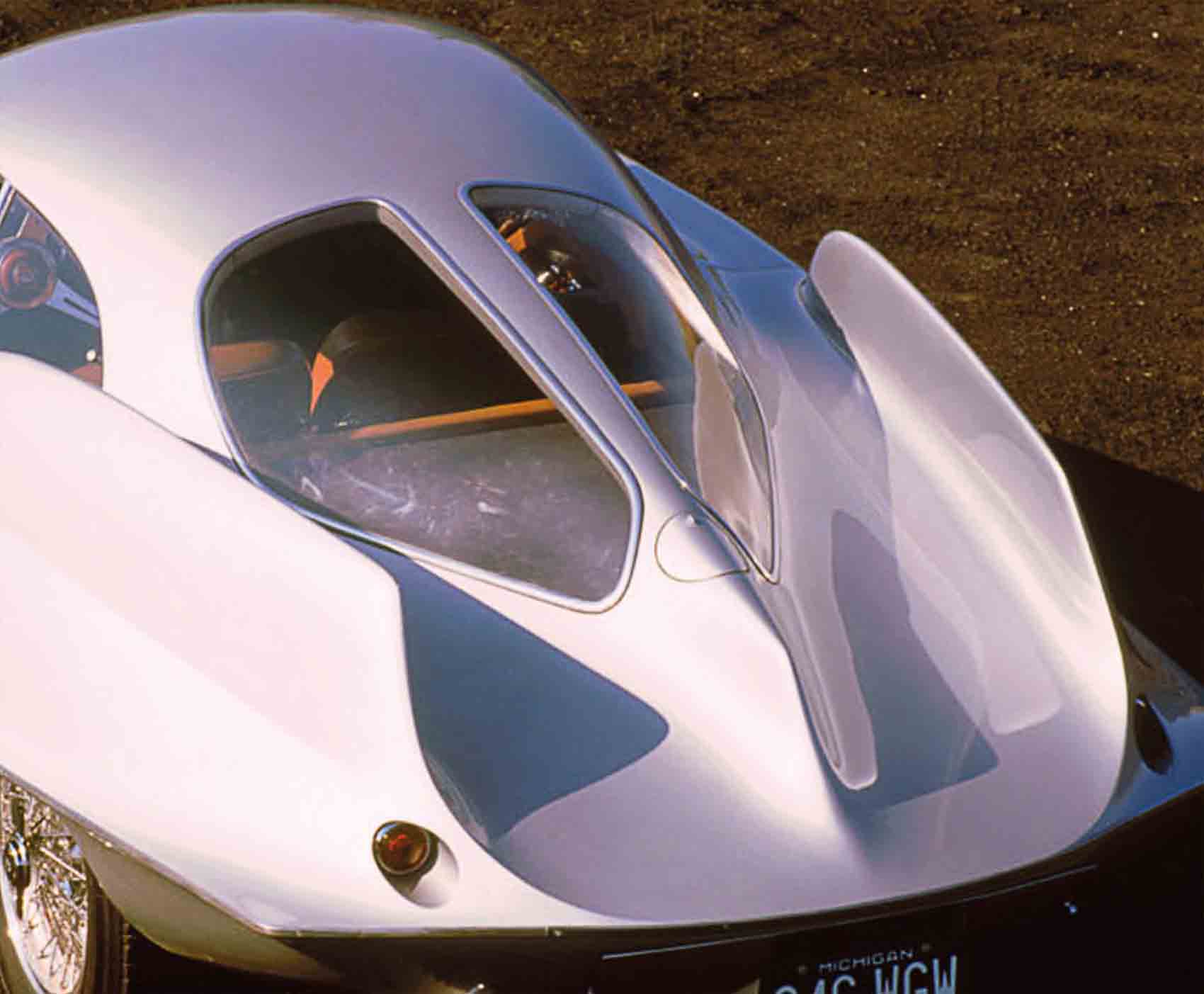
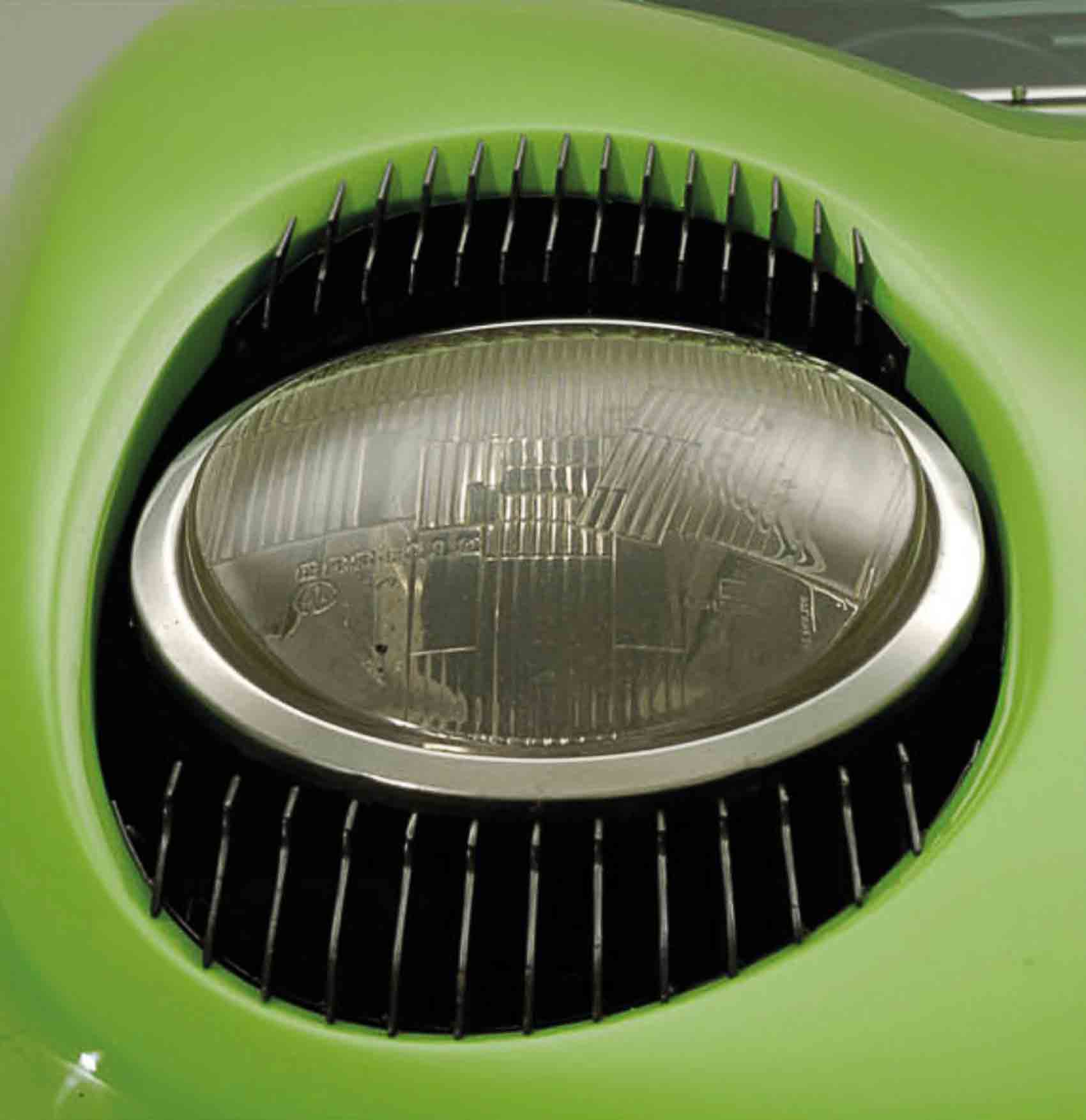
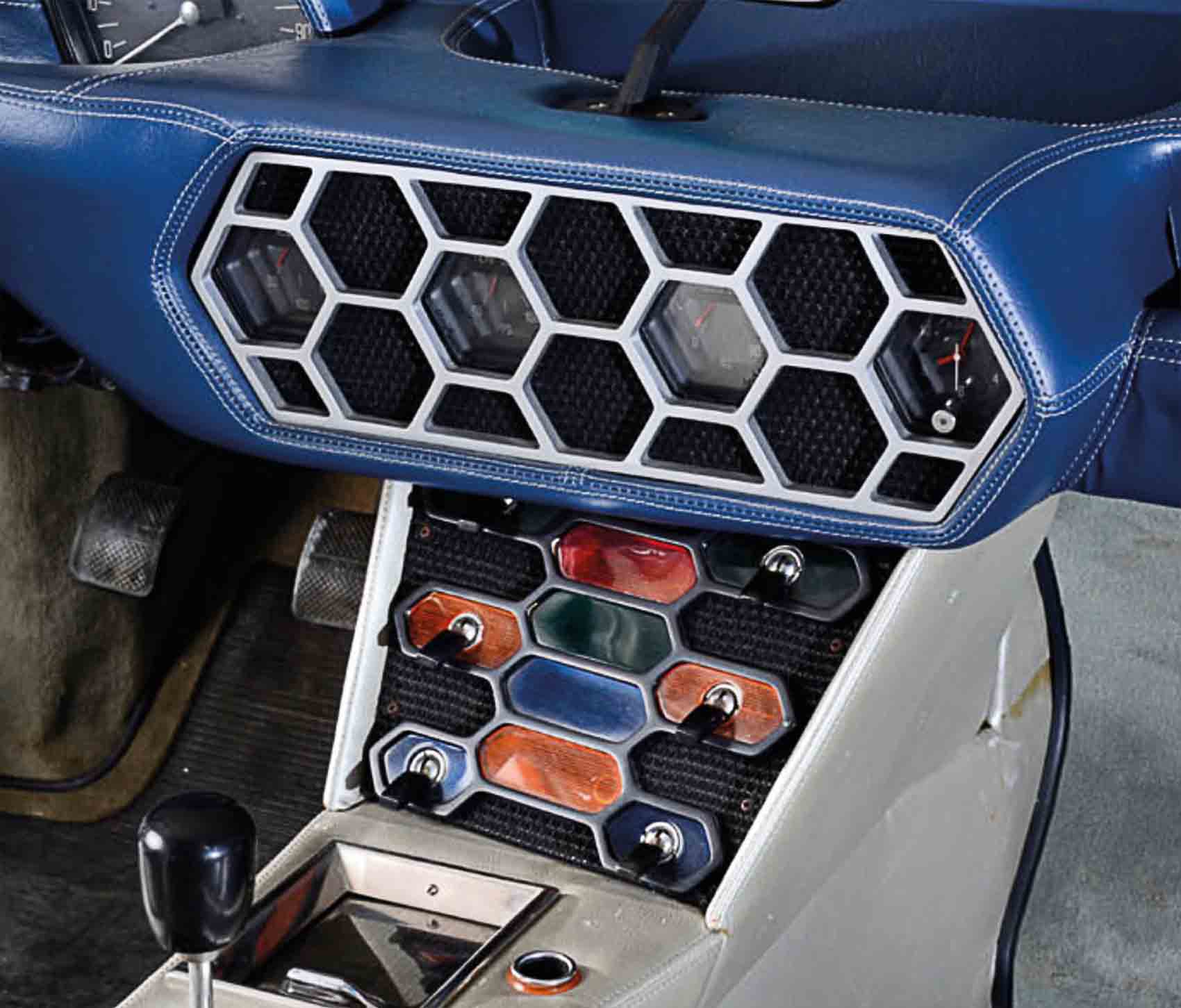
WICKED CHILDREN
Above and beyond y everything else, however, Nuccio always kept a special place in his heart for his pure show cars, which he dubbed his “children”, particularly the ones he called his “wicked children”—his controversial dream cars that pushed at the boundaries of the possible.
The late 1960s were inaugurated by 1967’s Lamborghini Marzal, a four-seater supercar with enormous, glass-filled gullwing doors, giving full view of the silver leather clad cabin.
No less dramatic was the 1968 arrow-shaped Alfa Romeo Carabo. The fluorescent red nose hinted at red-shift, “light-speed” velocities, while the upward-hinging “scissor” doors anticipated Bertone’s seminal Lamborghini Countach by four years.
Bertone’s 1970 Lancia Stratos Zero is perhaps the closest that car design has ever come to pure sculpture. Extreme in every way, it was wedge-shaped and ultra-low, with the passengers entering the car via a hinged windscreen and walking in over the front end. The seats were like beds, and the mid-mounted engine lid opened up like a grand piano. The Stratos name would later be revived for Lancia’s road and rally car in 1973—another iconic Bertone shape.
GEOMETRIC APPROACH
More strikingly original concepts followed: the 1974 Lamborghini Bravo with a wraparound windscreen that seemed to be formed of a single pane; the 1978 Lancia Sibilo whose plastic windows morphed into the bodywork, apparently in a single sheet; and the Ferrari Rainbow of 1976, composed almost entirely of angular lines. This geometric approach characterized a generation of Bertone designs. Unlike almost every other studio, Bertone took pride that its show cars were always fully running vehicles. Even after retirement, Nuccio would check on his designers at weekends, and leave gentle handwritten suggestions on their work.
Nuccio Bertone died in 1997. By then, his company was a colossus employing 1,500 staff. Sadly its fortunes waned and it collapsed into bankruptcy in 2014.
Career highlights
> 1912 Giovanni Bertone founds a carriage-making business in Turin
> 1920 Bertone expands rapidly, opening a car plant in Turin
> 1933 A 19-year-old Nuccio Bertone joins his father’s company
> 1952 Bertone appears at the Turin Show with two widely admired MG designs
> 1953 The first of the aerodynamic Alfa Romeo BAT series stuns the design world
> 1959 New factory opens at Grugliasco on the outskirts of Turin
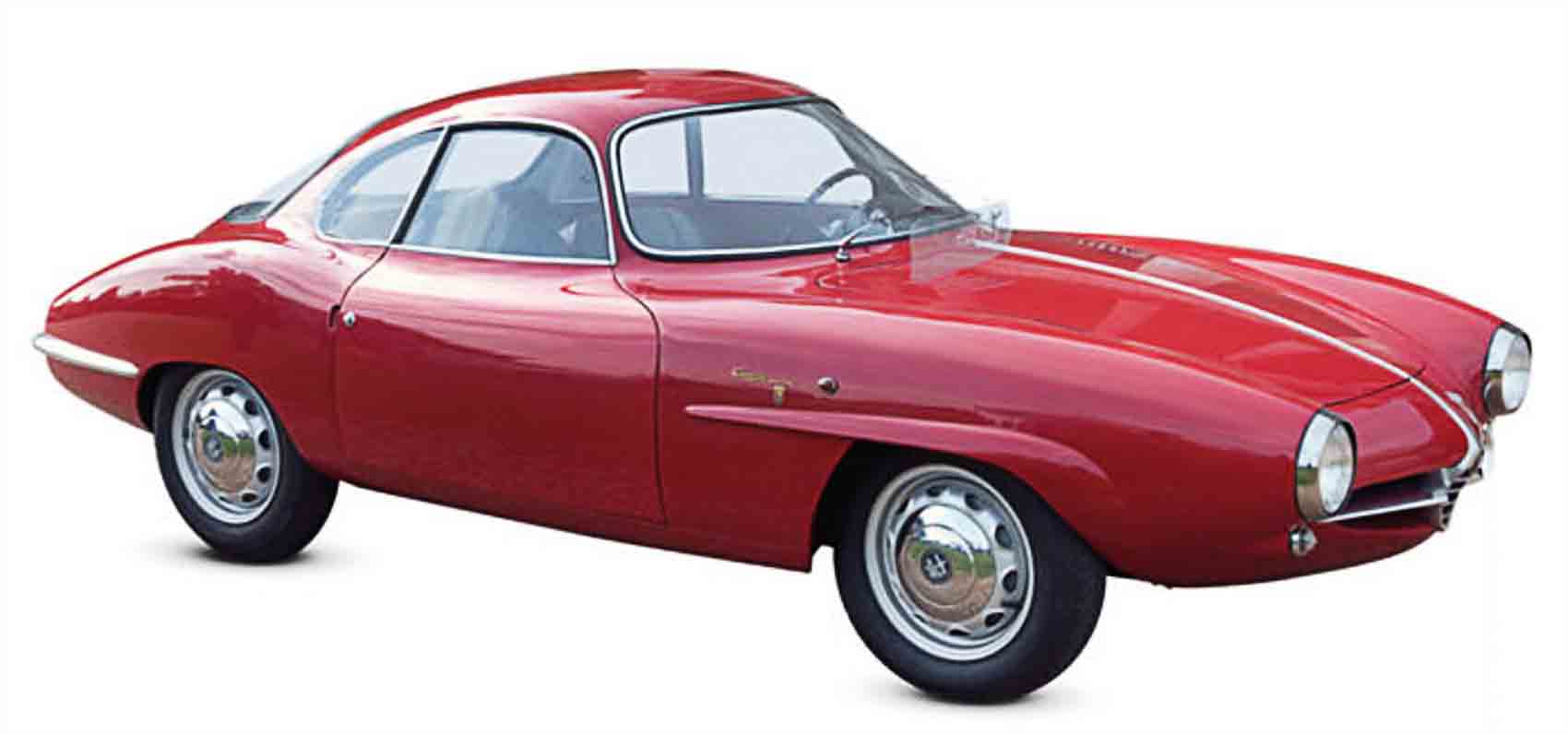
Premiered at 1960’s Geneva Salon with lightened bodywork designed by Bertone, the Giulietta SZ was entirely hand-built in aluminum. Its lightweight speed secured it several racing victories.
> 1966 Nuccio invents the supercar form with the Lamborghini Miura
> 1967 Marzal is the first of many pioneering Bertone dream cars
> 1973 The World Rally Championship-winning Lancia Stratos is launched
> 1980 The Fiat Ritmo Cabrio and X1/9 are manufactured and sold under the Bertone brand
> 1997 Nuccio dies aged 83
> 2014 Bertone files for bankruptcy
It is a quote. The Classic Car Book – The Definitive Visual History 2016




